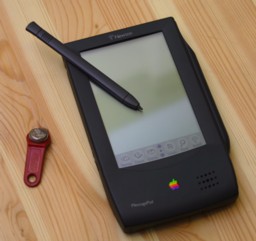

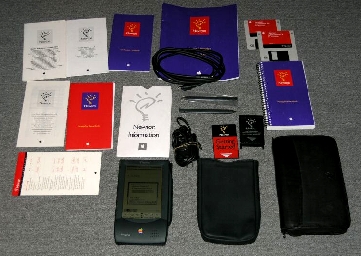
1993 R



![]()
APPLE NEWTON H1000 OMP - 1993. The
Apple Newton, or simply Newton, was an early line of personal digital
assistants developed, manufactured and marketed by Apple Computer from
1993 to 1998 and which sold for $800 (H1000) to $1,000 (following
models). The original Newtons were based on the ARM 610 RISC processor,
and featured handwriting recognition. Apple's official name for the
device was MessagePad ; the term Newton was Apple's name for the operating system it used, but popular usage of the word Newton
has grown to include the device and its software together. For
collectors, note that the above Newton in like-new condition with its
accessories was purchased on eBay for less than $70.
http://en.wikipedia.org/wiki/Apple_Newton
http://lowendmac.com/orchard/06/0207.html
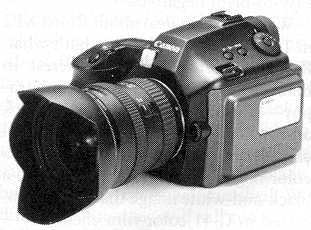
CANON
PROTOTYPE EOS DSLR - 1993.
1.3MP.
Popular
Photography, January 1993, p47. NOT MARKETED.
Scroll up to page 47 on the Popular Photography URL below.
X&ved=0ahUKEwjVgoHN7-bYAhUGI6wKHQH0BlAQ6AEILzAB#v=onepage&q=%22Popular%20Photography%22%20%2B%20%22January%201993%22%20%2B%2047&f=false
https://www.digitalkameramuseum.de/en/prototypes-rarities/category/canon
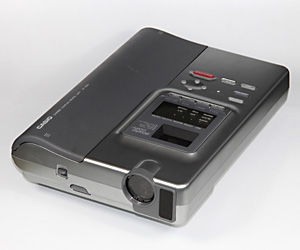
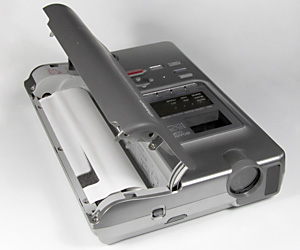
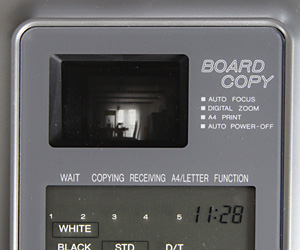

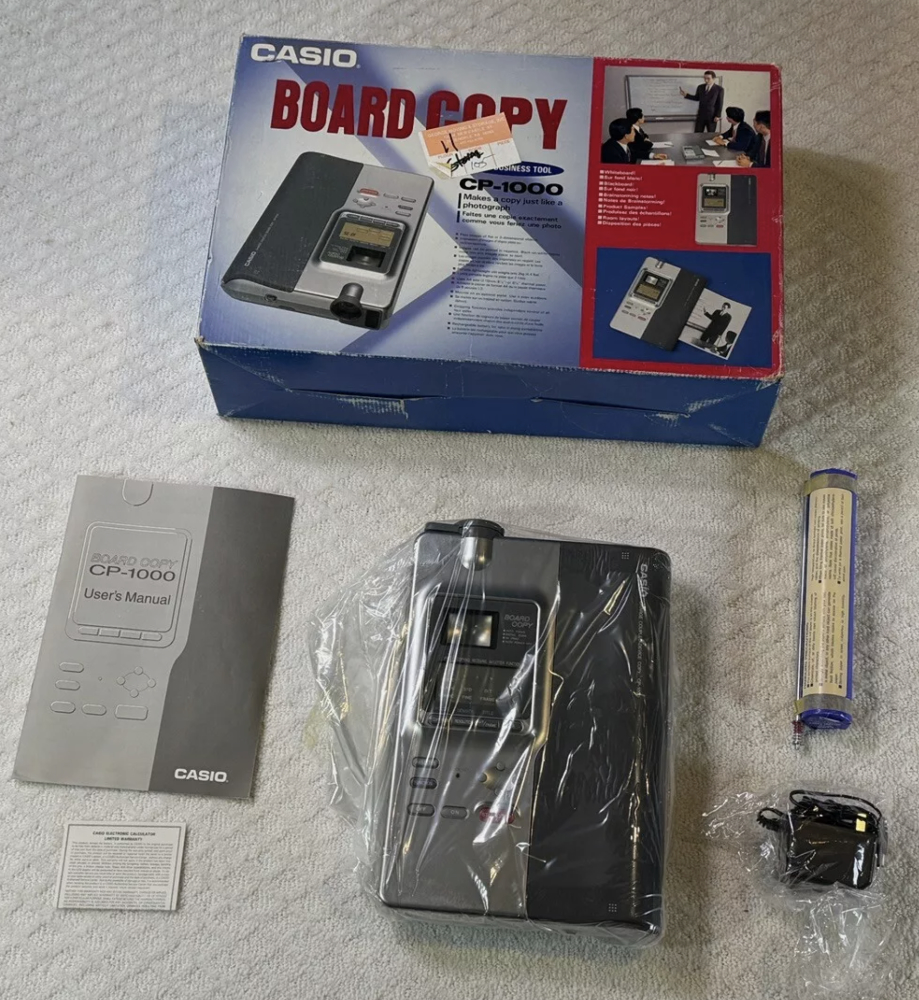
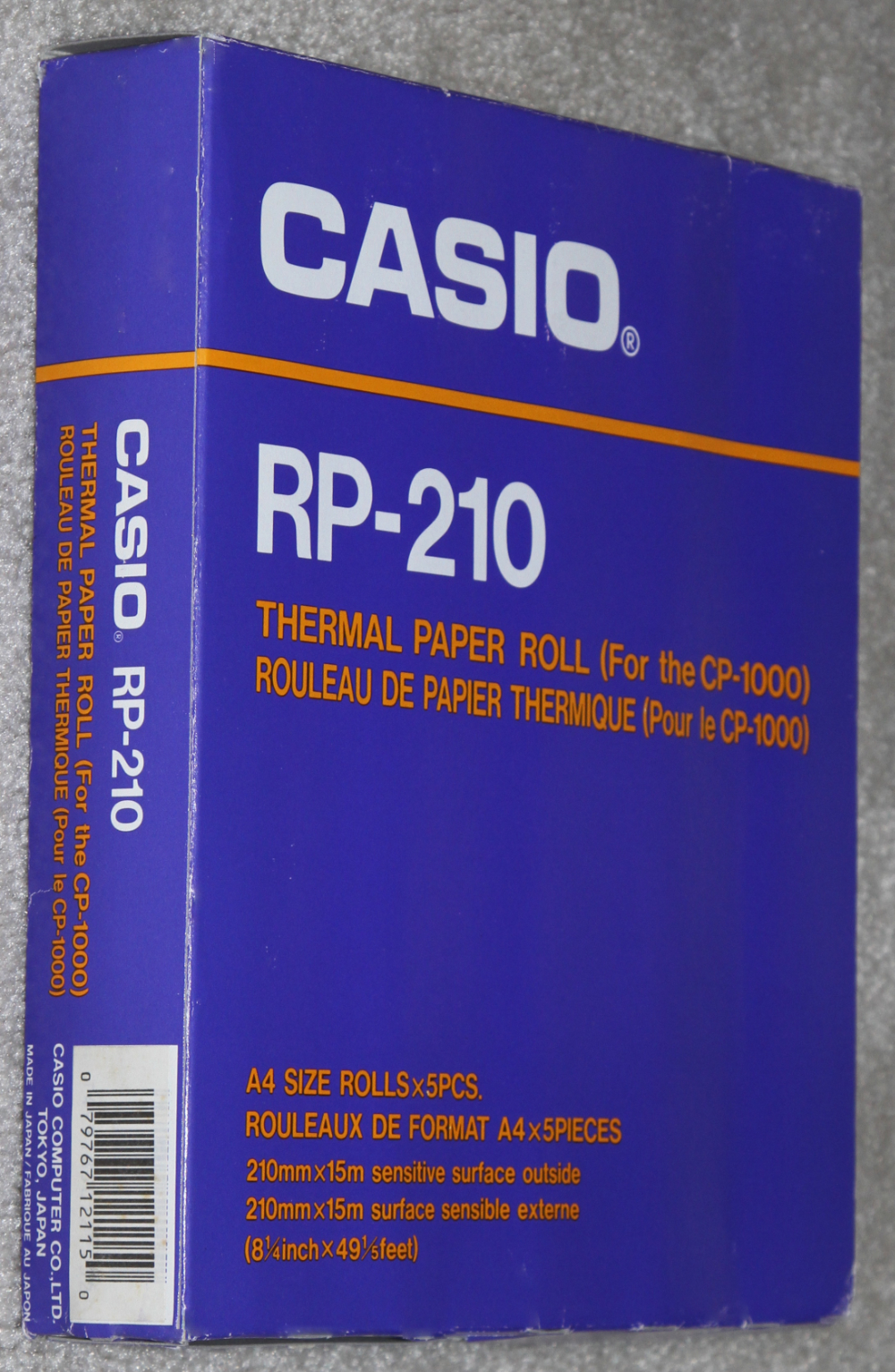
![]()
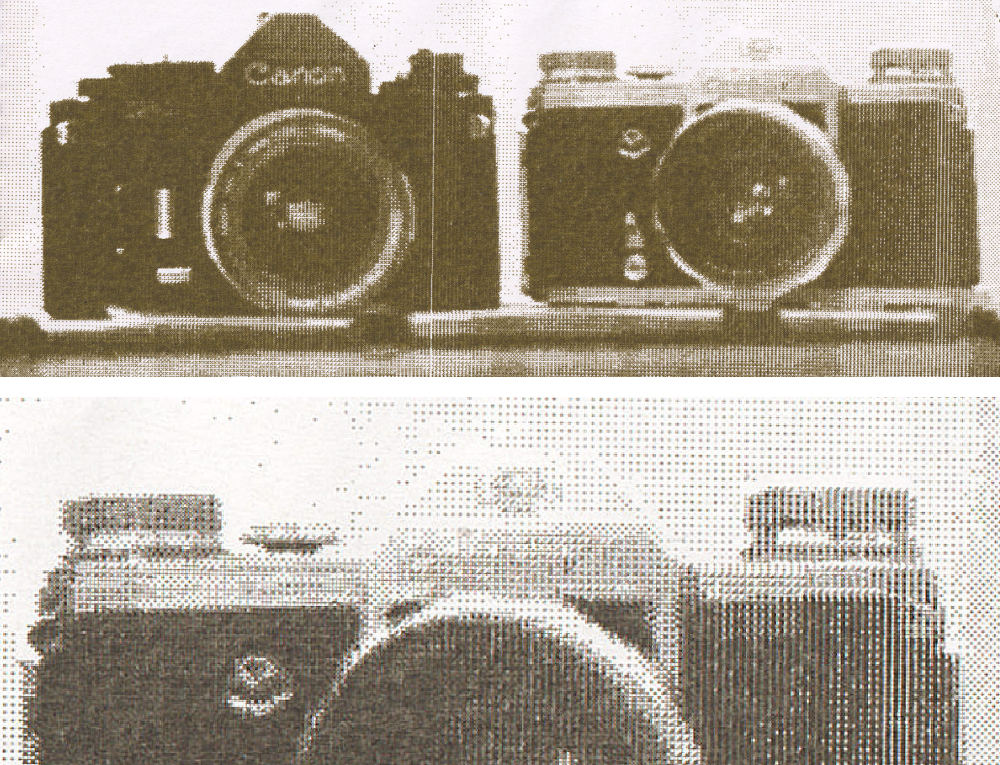
Casio CP-1000 Kit
4 Replacement Rolls
Sample
CP-1000 prints submitted by Ralf Jannke of www.digicammuseum.de
CASIO CP-1000 - 1993.
4MP, 24mm lens, f3.5, shutter speed 4 seconds, resolution 2376 x 1680
or 2040 x 1440. Size: 8 1/4 inches by 2 1/2 inches by 11
inches. We were not aware of this camera until we came
across it on the German web site, www.digicammuseum.de, which is
highlighted on our front page. According to the folks at
www.digicammuseum.de, they found it at a flea market. It is a
digital themal printer similar to the King Jim DV55 shown on our
1990 page. From their examination of the CP-1000, they state
that a flat sensor (CCD) is not used, but instead an arrangement
of linear brightness sensors (similar to a scanner) deliver a few
shades of gray. The viewfinder, which can be seen on top of
the camera, is a type of SLR viewfinder. After switching on a
large mirror, it is placed in a 45 degree position so that you can look
through the lens when looking into the bay. If a recording is to
be made the mirror first slowly folds and then the recording
begins. The specs say it uses a CCD reader with 1680 x 2376 or
1440 x 2040 pixels. Prints are made on thermal paper. In November
of 2024 we purchased a CP-1000 still complete
and unused in its original box. We did not check the size and
weight before purchase and were surprised when a large carton weighing
about ten pounds appeared on our front steps. Although I don't
intend to use the CP-1000, I couldn't resist the eBay price for a
carton of replacement rolls - $1.47! Warning: the gray
paint on the top of the CP-1000 deteriorates with age and becomes
sticky. Do not use goo remover on it as the paint will come
off. MSRP 1500 Euros (about $1700). (Very Rare on U.S. eBay)
NOTE:
If you haven't checked out digicammuseum.de yet, you are missing the
best all around digicam site on the web - click on the third URL below.
https://www.digicammuseum.de/kameras/detailansicht/kamera/Kamera/show/cp-1000/
http://www.casio.owner-manuals.com/CP1000-owners-manual-CASIO.html
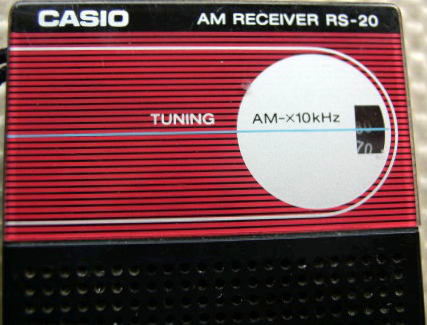
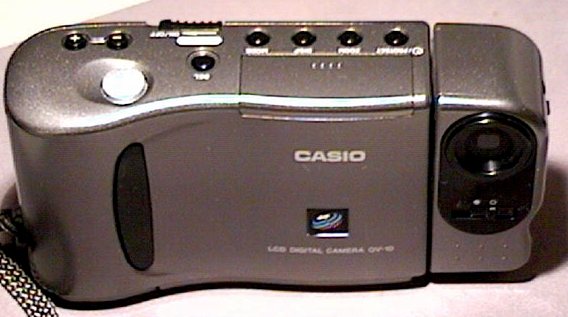
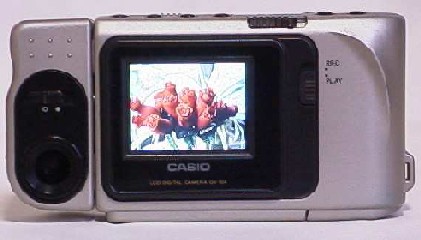
CASIO RS-20- 1993. You are correct, the image on the left is not a digital camera, but a Casio radio, model RS-20. Why does it appear here? Because Casio may have temporarily used that same model number for a digital camera that they were working on in 1993. One site shows a photo of a camera that is a duplicate in appearance to the Casio QV-10 of 1995, but with the RS-20 designation. The story goes that the RS-20 was intended to have a TV tuner, apparently so that owners could watch and listen to TV on their small (very small) screen digital camera! Since either cable or roof antennas are used to receive TV channels, it is difficult to see how Casio may have thought such a camera possible at that time when just producing a digital camera that actually worked was a significant achievement. A tiny portable TV combined with a digital camera would have been a task that even NASA would have shuddered to consider. Did Casio really have the QV-10 ready to go in 1993 and put it off for two years because they were seriously considering the TV idea? We don't know, but the photo shown of the RS-20 has all the buttons found on the QV-10 and otherwise appears to be exactly the same as the 1995 QV-10. Is the person responsible for that two-year delay now doing chauffeur duties? NOT MARKETED.
https://www.digitalkameramuseum.de/en/prototypes-rarities/item/casio-rs-20
http://rdriki.zashiki.com/newpage%20CASIO%20RS-20.html
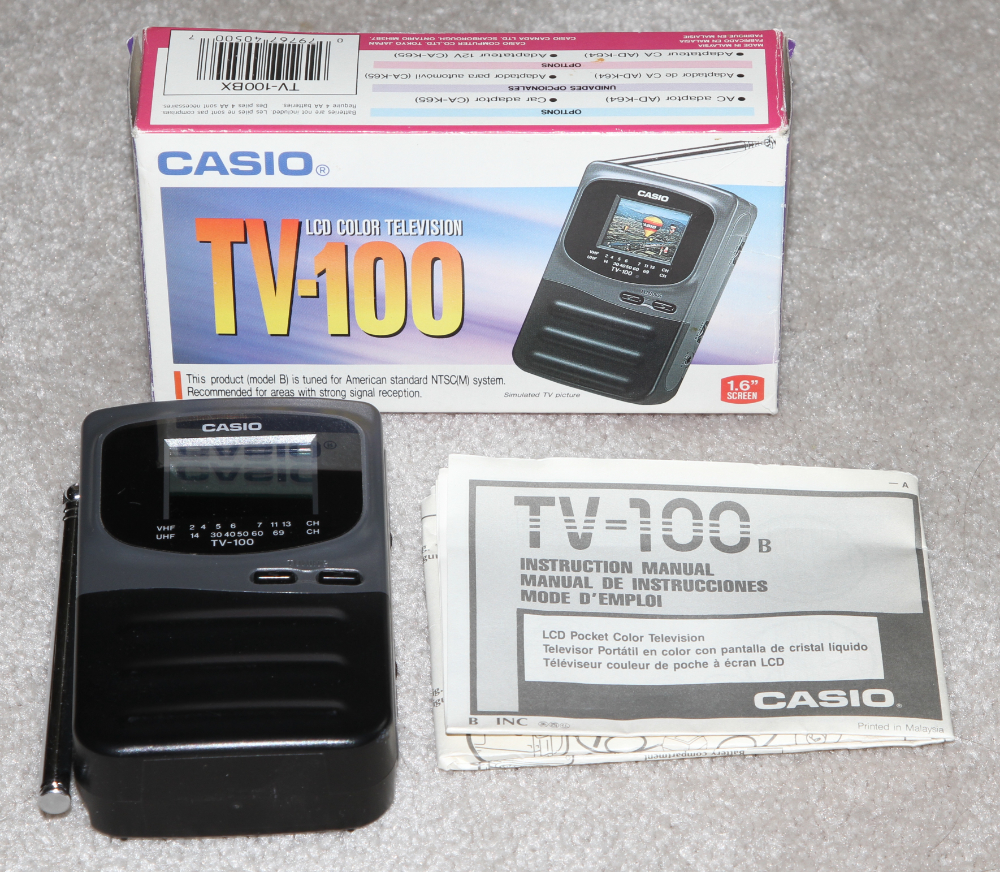
![]()
CASIO TV-100 - 1993.
Pocket TVs (handheld TVs) were discussed as far back as 1963 in
Mechanix Illustrated magazine. A number have been marketed by
various manufactures over the years, many much improved over the Casio
TV-100 of 1993. The above TV-100 is 2.8 inches by 4.5
inches by 1.4 inches in size and weighs about 2.2 lbs. It was one
of the best selling sets in Europe despite having a relatively poor
color LCD display. The TV-100 was also available with a yellow case and
could be purchased at Radio Shack under the
name Pocketvision 29. Screen size 31 mm (1.22 inch). Made in
Japan. The below URLs provide information concerning currently
available handheld TVs as well as those those marketed in the past,
many of which are still available on eBay.
https://en.wikipedia.org/wiki/Handheld_television
https://www.youtube.com/watch?v=idOJyjdbo-Y
http://www.guenthoer.de/e-history.htm
https://www.radiomuseum.org/r/casio_lcd_colortelevision_tv_10.html


![]()
COMPACTFLASH MEMORY CARD - 1993. The first ever CF card was of 1 MB capacity, was by SanDisk designed in cooperation with Kodak in 1993 for their professional line of cameras and was available in early 1994 branded as a Kodak compact flash card. (Information kindly provided by Ron Tussy of The Imerge Group) The first compact flash memory card available to the consumer market was introduced by SanDisk in October of 1994. It originally held 2-24 MB of data. The CompactFlash (CF) card is the most common memory card available with a 50-pin interface. CF cards contain a chip to control the process of information transfer. CompactFlash was SanDisk's first product based on the company's 32Mbit technology. CompactFlash cards are constructed with flash technology, a nonvolatile storage design that can retain data indefinitely without use of a battery. They are solid state, meaning they contain no moving parts.
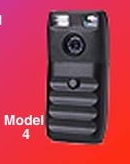
![]()
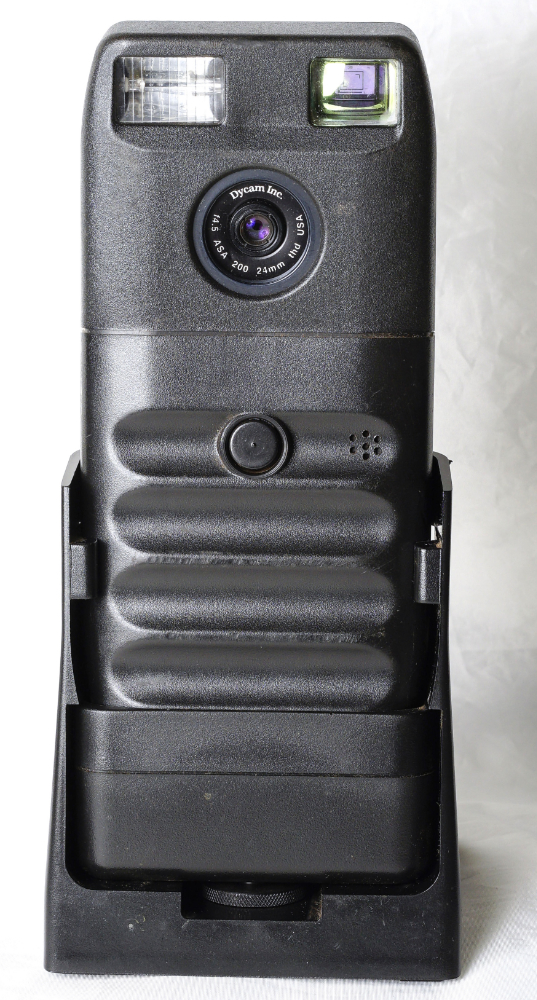

DYCAM
MODEL 4 and 4XL - 1993. 24-bit
color -or-
black
and white gray scale. 495 x 366 pixel CCD. Stored 8
standard
or 24 low-resolution digital photos. Price, $795. Price
included
software,
host adapter, cables and battery charger. Optional $99 lens
focused
down to 2.5 inches. The 4XL had four times the DRAM of the Model 4 and
cost about $200 more. The XL model appearance is the same as the
Model 4 except for the holes on the front which may have been for the
purpose of recording and playing back notes for each photo. The
back of the camera identifies it only as Model 4 with no XL
mentioned. The photos of the XL were posted on the web by an
individual with the non de plume of Photoman. Dycam had plans for
a model 5 and a model
6, and improved versions of such cameras designated as 5v and 6v. "In 1994 Dycam announced the development of several next generation
cameras intended to replace their model 3 and 4 cameras. These included
the Model 5 a 6 cameras which woul offer resolution comparable to the
Model 3 and 4 cameras, but would retail for approximately $395 and $495
respectively." Wall Street Journal, March 29th, 1995. (Rare on U.S. eBay)
http://camera-wiki.org/wiki/Dycam
http://archive.is/xNXbu
https://www.digitalkameramuseum.de/en/cameras/category/dycam
https://www.dpreview.com/forums/post/59434760
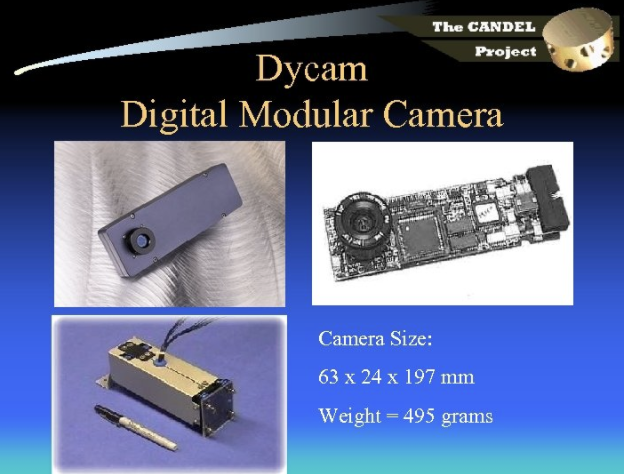
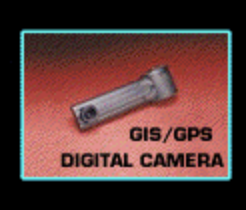
DYCAM MODULAR DIGITAL CAMERAS - 1993.
The Dycam Gator was one of the modular Dycam
cameras. It was developed as a joint effort between Dycam, IBM
and the
University
of Florida Research Foundation. Dycam modular cameras (photo
above left) were designed to be used with a
variety
of optical systems, computer interfaces and power supplies. MSRP:
gray scale $495, color $1,995.
https://present5.com/the-candel-project-cansat-delivery-project-laura-lewis/
http://camera-wiki.org/wiki/Dycam
https://www.digitalkameramuseum.de/en/cameras/item/dycam-gator
https://www.digitalkameramuseum.de/en/cameras/item/dycam-modular-camera
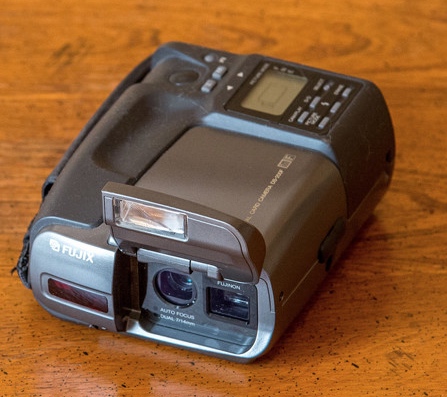

FUJI DS-200F - 1993. World's
first digital camera with flash memory. CCD 640 x 480
pixels. Lens f7mm & f14mm, F3.4. Shutter 1/4 secon to
1/750 second. Aperture F3.4-F/14. MSRP $1,999.
https://www.popphoto.com/gear/2013/10/30-most-important-digital-cameras
https://www.flickr.com/photos/maoby/9702140816/in/photostream/
http://camera-wiki.org/wiki/Fujifilm_digital_cameras
https://www.digitalkameramuseum.de/en/cameras/item/fujix-ds-200f
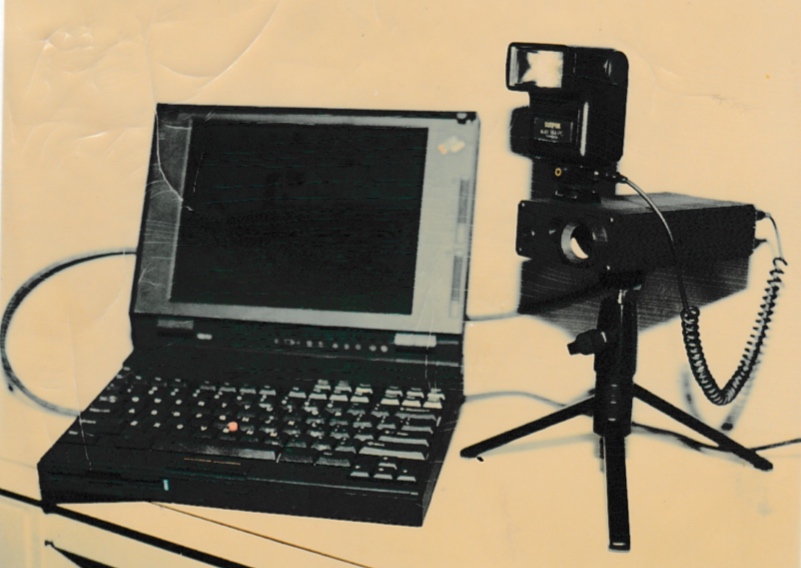

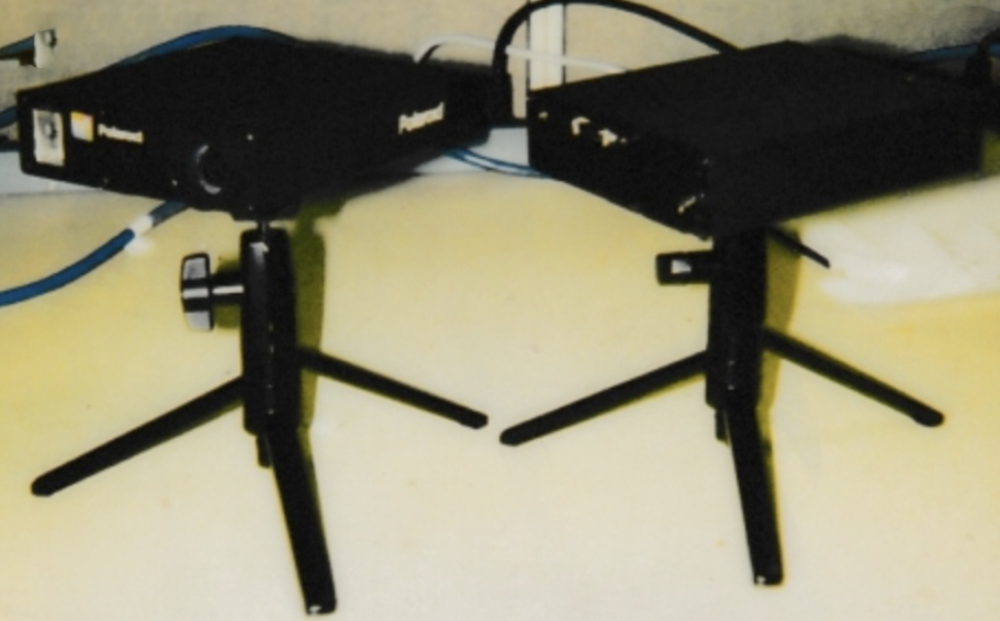
1993
CES
Protoype
Followup Prototype
IBM / POLAROID - 1993. We previously reported on a possible IBM/Polaroid prototype digital camera attached to an IBM Thinkpad Laptop shown at Winter CES 1993. This was based on a remark by Jack Kuehler, president of IBM at that time, stating that they were working on a camera with Polaroid: "He (IBM president Jack Kuehler) also announced that IBM is working with Polaroid to develop a new digital instant camera that will make film processing unnecessary. The images could be manipulated and viewed on a PC." Kuehler called it ''a vivid example of combining the impact of images and the power of computing." At the time we posted this information on our web page we could not confirm the existence of such camera, but now we can thanks to Vincent Clark who provided us with a photo of said camera. Mr. Clark stated, "I believe this photograph and related demonstration was the first of a high definition image camera connected to a laptop, Both were new technologiesat the time. The interface was PCMCIA since USB 1.0 was also relatively new." Mr. Clark was responsible for designing the electronics and delivering the demonstration camera to the CES in 1993. He says that The imager was the same as the Polaroroid PDC 2000 of 1996: 800 x 600 pixel CCD ( interpolated to 1600 x1200 pixels). ISO was 100. Renus Ramas was the electrical engineer in charge of the PCMCIA interface. The prototype demonstrated at CES 1993 was the first for the IBM/Polaroid effort. There was a follow up prototype that was used for following demonstrations at trade shows which inclueded an internal flash. Talks with IBM ended sometime after the following demonstrations, and Polaroid started to productize the camera technology as the PDC2000. The PDC2000 was promoted as a more of a traditional hand held camera. Laptops, cell phones, and tablets have proven that the 1993 CES original concept was well ahead of its time. NOT MARKETED.
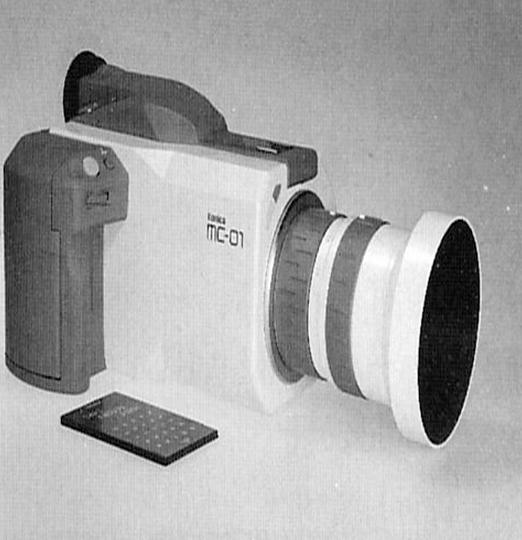
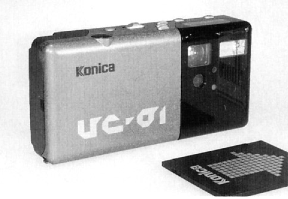
KONICA MC-01 and UC-01 - 1993. In 1993 Konica developed two prototype CCD digicams that stored images on IC memory cards. The MC-O1 was defined by Konica as high definitin and had a 1.3 million pixel CCD with zoom lens at ISO 100 and with an LCD display. NOT MARKETED.
See Digital Kamera Museum URL below for specs.
Takayuki Kuwata
Development of high-quality digital still camera (740KB) PDF
Seiichi Isoguchi, Jun Takayama, Takashi Minaki
https://research.konicaminolta.com/jp/pdf/technology_report/1996/pdf/1.pdf
https://research.konicaminolta.com/jp/pdf/technology_report/1994/pdf/23.pdf
http://www.konicaminolta.jp/about/research/technology_report/1994/pdf/23.pdf
https://www.digitalkameramuseum.de/en/prototypes-rarities/category/konica

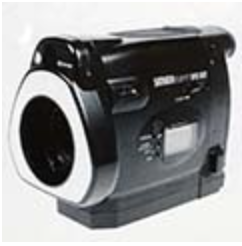
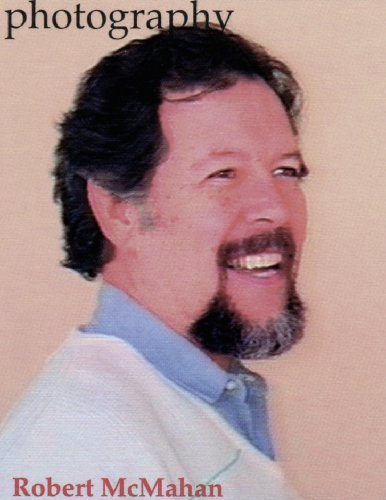
![]()
![]()
ROBERT MCMAHAN, PIXEL PHOTOGRAPHY - 1993.
A guide to using computer technology to create electronic photography
introduced readers to electronic imagery, discussing all aspects of
photography and tracing the steps, through text and photographs, to
electronic imaging. A text for those at the time interested in
the growing field of electronic imaging, Pixel
Photography covers shooting photographs to be used for electronic
imaging, and then takes the reader through the process of changing the
photograph to an electronic image to be manipulated on a
computer. The book was designed for photographers, desktop
publishers, graphic designers, printers, artists, and others interested
in this then new technology. The descriptions of the early
technology and still video and digital cameras available at that time
make this book a must have for collectors of still video and
early digital cameras.
http://www.amazon.com/Pixel-Photography-Robert-McMahan/dp/1881656012
https://www.lensculture.com/books/7202-pixel-photography

NIKON D1 PROTOTYPE F - 1993. During the 1993's Newspaper Exposition ('NEXPO'), New Orleans Nikon showcased a D1 model which has a very strong appearance of the E-Series. The camera, capable of delivering a resolution of 560,000 pixels (1088 x 480), shutter speed range from1/8 to 1/2000 sec, and a rapid shooting rate of 1.7 eps (exposures per second) probably formed the basis for the joint venture project with Fuji Film Ltd. later to co-develop/produce the E-series models. The eventual product improved the image resolution from this prototype unit to 1.3 million pixels (1,280 X 1,000). NOT MARKETED.
http://www.mir.com.my/rb/photography/companies/nikon/htmls/models/digitalSLRs/index.htm
http://www.mir.com.my/rb/photography/companies/nikon/htmls/models/digitalSLRs/D1/index.htm#D1prototype
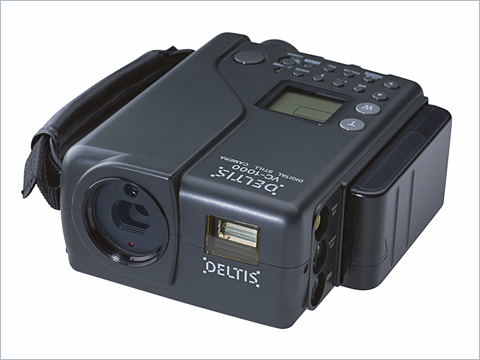
OLYMPUS
DELTIS VC-1000 - 1993. Digital camera. Zooming
could
be varied from a focal length of 10.2 mm to 19.6 mm (54-108mm 35mm
camera
equivalent). 768 x 576 pixel CCD. Shutter 1/8 to 1/10,000
second.
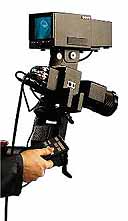
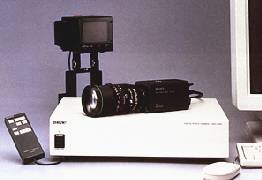

![]()
SONY DKC-5000/PC1
CATSEYE - 1993. The
DKC-5000 CatsEye digital camera was intended for commercial studio
applications. Three 440K pixel, 1/2-inch CCDs (red, blue,
green) provided a 1540 X 1120 pixel image. ISO 100, 200,
400, 800. Shutter 1/10,000 to 4 seconds. MSRP
$15,000.
https://www.hospitalnetwork.com/doc/sony-dkc-5000-catseye-digital-camera-0001
https://www.digitalkameramuseum.de/en/cameras/item/sony-dkc-5000
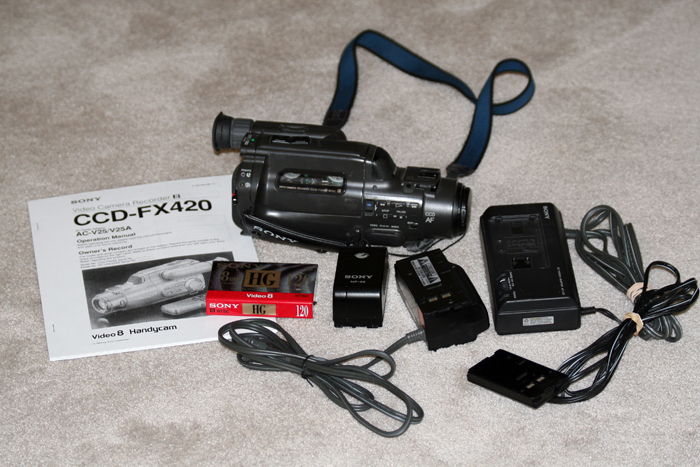
![]()
SONY CCD-FX420 HANDYCAM - 1993. Typical
analog camcorder of the late 80's and 90's, the CCD-FX420 used 8mm
video cassette tape as a recording medium. Features included infra-red
auto focusing, 10X zoom (two speeds), macro, fade-in and fade-out,
focus hold. Shown above with AC-V35 AC power adapter, AC-V25 charger
and Sony battery NP-68.
https://www.flickr.com/photos/humanrights/7211492656
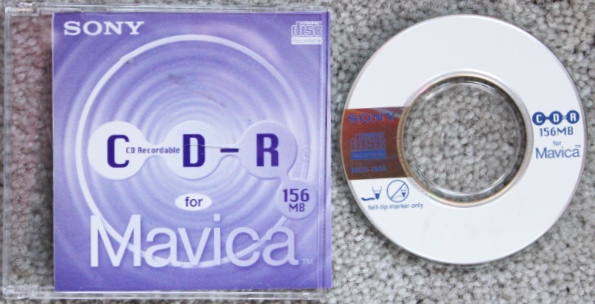

![]()
DATA
MINIDISC (MD) - 1993.
In 1993 Sony marketed the minidisc - 8 cm CD-R disc. These mini CD-R's
provided 156 MB of storage per disc and were relatively cheap. This
allowed Sony to increase image quality by using a less aggressive
compression and yet still maintain the Mavica's convenience in being
able to just pop the disc into a standard CD-ROM drive. They were
the recording medium used in the 1997 Sony Cybershot DSC-MD1 and the
2000 Sony MVC-CD1000.
https://www.dpreview.com/reviews/sonycd1000/
https://www.digitalkameramuseum.de/en/memorycards
http://en.wikipedia.org/wiki/MiniDisc


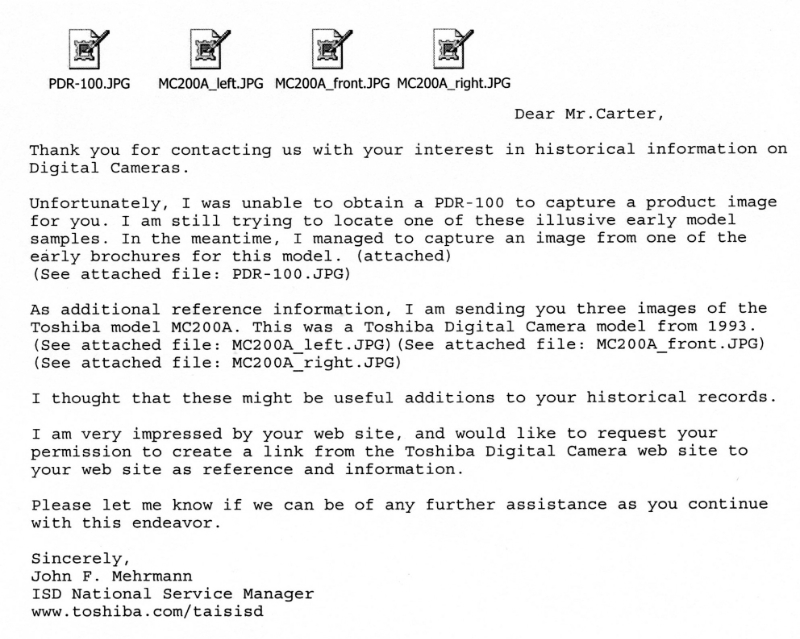

Toshiba MC200A mentioned in Harry Potter novel.
http://adwrp-blog.tumblr.com/post/118166644609/picture-upload-samples
http://www.jrussbeauchamp.com/dcs/extras.php
1993